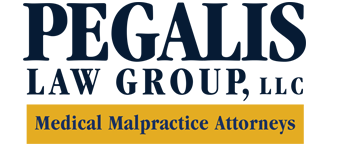-
What Are the Benefits of Seeking a Second Opinion After a Diagnosis?
It isn’t always necessary to get a second opinion. Common, relatively minor medical problems like sinus infections and pink eye have straightforward treatment regimens that are widely accepted by medical professionals. But in some cases, a second opinion can prove invaluable. Medical malpractice lawyers recommend getting a second opinion after a diagnosis of any potentially life-threatening, disabling, complex, or rare condition.
Second opinions reduce the risk of a misdiagnosis.
Doctors have advanced education and training, but they’re still capable of making mistakes. It’s possible for another doctor to see something that the original physician overlooked. By talking to another physician, you’ll learn whether the initial diagnosis was made without the benefit of various lab tests and imaging scans that you should have had. The second doctor might even discover that appropriate tests were ordered, but were somehow left out of your records, and so they weren’t considered when the initial diagnosis was made. You’ll discover the original doctor’s level of confidence in the diagnosis.
You’ll discover the original doctor’s level of confidence in the diagnosis.
Good doctors aren’t offended when their patients inform them that they are seeking a second opinion. On the contrary, most doctors should welcome the idea, as it means their patients are proactive, and they are truly getting involved in their own healthcare. Plus, a doctor who has full confidence in his or her diagnosis will also have confidence that another doctor will confirm the diagnosis. If your doctor attempts to dissuade you from talking to another physician, this could be an indicator that getting a second opinion is imperative, and also that you may want to switch doctors.You’ll get more information about your diagnosis.
Even if the initial diagnosis is correct, getting another opinion can still be beneficial. Some patients talk to another physician when they aren’t fully satisfied with the information given to them. Another doctor can help address your questions more thoroughly, and he or she can discuss your treatment options with you.Medical negligence lawyers serving patients in New York urge families to seek a second opinion after any major diagnosis. Unfortunately, it’s still possible to be affected by medical malpractice even after taking steps to protect yourself. If you feel you could benefit from our legal advocacy services, please don’t hesitate to call us at (516) 684-2900.
-
Breast Cancer Awareness Month
October is Breast Cancer Awareness Month, which is also a good time to be aware of some common breast cancer malpractice issues, including the misdiagnosis and delayed diagnosis of breast cancer.
Breast Cancer Misdiagnosis
Approximately one in eight women in the U.S. is affected by breast cancer according to the American Cancer Society. For women in the United States, breast cancer is the second deadliest form of cancer. It is also, unfortunately, one of the most often misdiagnosed forms of cancer.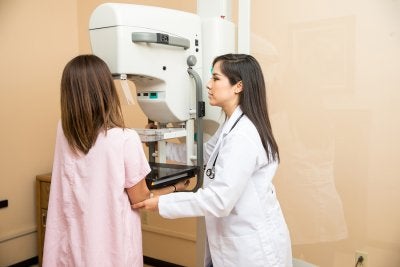 In many cases, breast cancer presents with subtle symptoms. Breast lumps, for example, are a common sign of breast cancer—yet many breast lumps are benign and coincide with hormonal changes. Sometimes, lumps are located in nearby lymph nodes in the armpit before they are located in breast tissue. Other more visible symptoms include skin changes such as dimpling of the breast, nipple discharge, itching and scaling of the nipple, and breast or nipple pain.
In many cases, breast cancer presents with subtle symptoms. Breast lumps, for example, are a common sign of breast cancer—yet many breast lumps are benign and coincide with hormonal changes. Sometimes, lumps are located in nearby lymph nodes in the armpit before they are located in breast tissue. Other more visible symptoms include skin changes such as dimpling of the breast, nipple discharge, itching and scaling of the nipple, and breast or nipple pain.Breast cancer diagnosis becomes challenging because of its nonspecific signs, which mimic many other less severe conditions. Still, it is important to mention any breast changes to your doctor, who can order further diagnostic exams to pinpoint the exact cause.
Delayed Diagnosis of Breast Cancer
A delayed diagnosis of breast cancer results in delayed treatment, which can cause women to lose their lives. Patients with invasive lobular carcinoma— a certain type of breast cancer— are especially susceptible to a delayed diagnosis, which can have serious consequences.In cases of misdiagnosis, doctors may treat patients for another condition, possibly causing damage to the body while the cancer continues to grow or even metastasize, which can result in increased symptoms and may be fatal. As with other forms of cancer, early detection, diagnosis, and treatment of breast cancer are key in increasing survival rates.
The five-year survival rate for breast cancer is nearly 100% for Stage 0 and Stage I, but a delayed diagnosis may not be found until the cancer moves into Stage II, III, or IV (which only has about a 22% survival rate).
If you have suffered from a breast cancer misdiagnosis or a breast cancer delayed diagnosis, contact Pegalis & Erickson, LLC for a case review at (516) 684-2900.
-
Recognizing Instances of Hospital Malpractice
Medical malpractice can have life-altering consequences for patients. An attorney can help affected patients pursue the compensation they need to move forward with their lives. It’s possible to name a hospital as a defendant along with one or more healthcare providers. For instance, a medical malpractice lawyer may present evidence that shows the hospital was negligent in failing to staff sufficient numbers of qualified healthcare personnel.
 This act of hospital malpractice can be particularly serious in the emergency department. If there aren’t enough ER doctors, or the ER doctors aren’t adequately qualified, substandard treatment or delays in treatment can jeopardize a patient’s health. A hospital might also be found liable for neglecting to refer patients for follow-up care with their primary doctors or a specialist.
This act of hospital malpractice can be particularly serious in the emergency department. If there aren’t enough ER doctors, or the ER doctors aren’t adequately qualified, substandard treatment or delays in treatment can jeopardize a patient’s health. A hospital might also be found liable for neglecting to refer patients for follow-up care with their primary doctors or a specialist. Patients who have been affected by acts of medical negligence near New York are invited to contact Pegalis & Erickson, LLC at (516) 684-2900. We are a malpractice law firm committed to empowering patients and their families.
-
Birth Injuries and Infant Feeding Problems
Occasional fussiness with feeding is usually nothing to be concerned about. But if your baby consistently has problems feeding or hasn’t been gaining enough weight, it’s time to see a doctor. There are many possible causes of poor feeding, including previously undiagnosed birth injuries. After a diagnosis of a birth injury, consider speaking with a lawyer to determine whether the cause might have been medical malpractice.
 Causes of Infant Feeding Problems
Causes of Infant Feeding Problems
Quite a few medical issues can lead to feeding and swallowing problems, including neurological disorders caused by medical negligence. Cerebral palsy is one example. Oral motor dysfunction is common in children with cerebral palsy. This means the infant has trouble sucking. It occurs with either breastfeeding or bottle-feeding. Another possible cause of feeding problems is a respiratory disorder, which might be the result of premature birth. This is because pre-term babies might not be born with fully developed lungs. A third possible cause of feeding problems is neonatal hypoglycemia, or low blood glucose. Doctors should recognize the risk factors of hypoglycemia, and test the newborn’s glucose when appropriate.Signs of Infant Feeding Problems
Babies are weighed at each check-up to ensure they are gaining weight properly. Failure to thrive can indicate feeding and swallowing problems. Aside from the baby’s weight, feeding problems may be indicated by the following signs:- Very long feeding times
- Gagging or coughing during feeding
- Fussiness while feeding
- Back arching while feeding
- Excessive drooling
- Poor coordination of breathing while feeding
- Recurrent respiratory infections, including pneumonia
- Spitting up or vomiting frequently
As the child grows older and begins transitioning to solid foods, he or she may refuse foods with certain textures.
Treatments for Infant Feeding Problems
Hospitalization and tube feeding may be necessary if the problem is severe. Otherwise, specialists may recommend positioning changes, sucking improvement techniques, and oral motor exercises to build strength and sometimes swallow therapy.At Pegalis & Erickson, LLC—a medical malpractice law firm in New York—we’re committed to protecting the rights of the youngest of patients and their families. Birth injuries are distressing, but you don’t have to face this challenge alone. Call our medical malpractice attorneys at (516) 684-2900.
-
Has Your Doctor Been Accused of Misconduct?
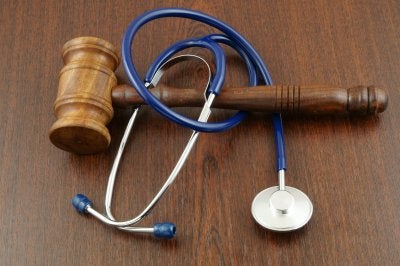 Prior to putting your health and your life in the hands of a doctor, you as a proactive patient should take advantage of available information concerning a physician’s background
Prior to putting your health and your life in the hands of a doctor, you as a proactive patient should take advantage of available information concerning a physician’s background In New York, the Office of Professional Medical Conduct—OPMC—investigates complaints about healthcare professionals. You can use the OPMC website to research your providers and find out if they have any record of complaints in their past. This information can help you make an informed decision about your healthcare. When considering a doctor for your care, you can also check doctors’ backgrounds on the New York State Physician Profile Website.
The medical malpractice lawyers in New York at Pegalis & Erickson, LLC can assist you if you suspect medical negligence has impacted your healthcare. To discuss the details of your case, please call (516) 684-2900. We advocate for people of all ages who have been victims of avoidable negligence that caused them life-altering harm or death.
-
Reasons for Planned and Unplanned C-Sections
Many expecting mothers look forward to their due dates with as much apprehension as excitement and joy. The experience of welcoming a child into the world is unlike any other, but there are so many things that can go wrong. In some cases, the obstetrician, midwife, or attending nurses may neglect to recommend a cesarean section when it is medically necessary. There is no substitute for quality medical care, and the consequences of medical malpractice can change a child’s life forever.
Planned C-Sections
Planned C-sections are those that are scheduled before labor begins. An obstetrician may recommend a planned C-section for the following reasons:- Breech position
- Pregnancy with multiples
- History of prior C-sections
- Increased risk of uterine rupture
Planned C-sections might also be recommended when the mother has an infection that could be transmitted to the baby if he or she is born vaginally. In other cases, maternal health conditions are at risk of becoming severe during the stress of labor and childbirth. One common example is heart disease.
 Unplanned C-Sections
Unplanned C-Sections
Women who go to the hospital expecting to have a vaginal birth might still need to have a C-section due to unexpected complications. Emergency or unplanned C-sections may be needed for the following reasons:- The baby is too big
- Labor is prolonged, difficult, or stops
- The baby shows signs of distress, such as heart rate abnormalities
- Complications affect the umbilical cord
Delayed C-Sections
A delayed C-section is when the attending medical staff fails to perform a C-section in a timely manner when it is apparent that the procedure is medically necessary to safeguard the health of mother and baby. This type of medical malpractice can result in birth injuries, such as physical injuries to the baby and an increased risk of developmental delays. For instance, the delay in performing a C-section can cause a disruption in the flow of oxygen to the baby. If the baby’s brain is deprived of oxygen, he or she can quickly begin to sustain brain damage. This can result in disorders like cerebral palsy.Here at Pegalis & Erickson, LLC, we understand the devastating effects of medical malpractice on a family. If your family has been affected by birth injuries at a hospital near Long Island, New York, you can reach out to our malpractice law firm to let us know how we can help you. Call (516) 684-2900 for more information.
-
Stroke and Misdiagnosis
Stroke can be deadly, and the risk of stroke is particularly high among elderly patients. However, stroke can actually affect patients of any age—including newborns. Because stroke is perceived as being a problem for older patients, younger individuals who suffer stroke may be misdiagnosed. These serious emergency room errors may be a form of medical malpractice if the physician deviated from standard diagnostic procedures.
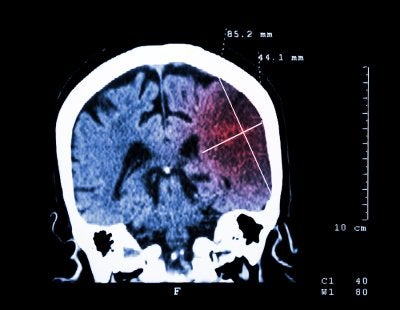 When stroke occurs, every second counts. The misdiagnosis of stroke may mean that a patient cannot receive clot-busting drugs within a critical time period to improve the chances of survival. When misdiagnosed patients do survive a stroke, they may suffer serious, lifelong consequences as a result of the death of brain cells.
When stroke occurs, every second counts. The misdiagnosis of stroke may mean that a patient cannot receive clot-busting drugs within a critical time period to improve the chances of survival. When misdiagnosed patients do survive a stroke, they may suffer serious, lifelong consequences as a result of the death of brain cells. Emergency room errors committed on Long Island, New York can have devastating consequences, which is why the medical negligence lawyers at Pegalis & Erickson, LLC are always here to help. Call us at (516) 684-2900 to request a consultation with our medical malpractice team.
-
Accurately Diagnosing Stroke
By designating May as American Stroke Month, the American Stroke Association aims to raise awareness about the critical importance of early detection and treatment of this life-threatening medical event. It’s crucial for patients to learn how to be their own healthcare advocates, given the risks of medical malpractice in stroke cases that may result in wrongful death.
Detecting the Signs of Stroke
The accurate diagnosis of stroke begins with the patient’s recognition of the potential signs and symptoms of stroke. These symptoms include:- One-sided weakness, numbness, or paralysis
- One-sided facial drooping
- Confusion
- Excruciating headache
- Dizziness
- Slurred speech
- Impaired coordination
- Difficulty walking
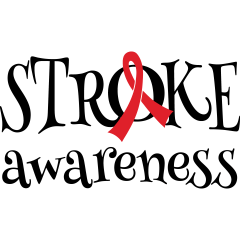 Diagnosing or Misdiagnosing Stroke at the ER
Diagnosing or Misdiagnosing Stroke at the ER
One of the reasons why doctors may fail to diagnose stroke properly is that some of the symptoms can mimic other health conditions, such as the following:- Seizure
- Hypoglycemia
- Systemic infection
- Migraine
- Dementia
- Alcohol intoxication
However, because of the life-threatening nature of stroke, it’s imperative that doctors do consider the possibility of stroke when a patient presents with certain symptoms. Doctors ought to avoid emergency room errors by performing some of the following diagnostic exams and tests to check for stroke.
- Physical exam
- Medical history review
- Symptom review
- Blood tests
- Computerized tomography (CT) scan
- Magnetic resonance imaging (MRI) scan
- Carotid ultrasound
- Cerebral angiogram
- Echocardiogram
If a patient suffers a stroke that goes undiagnosed or is misdiagnosed, a medical malpractice lawyer will consider whether the doctor was negligent in failing to order any of these tests.
Getting Prompt Treatment for Stroke
An accurate diagnosis is crucial for administering the correct treatment. Most strokes are ischemic strokes, which are caused by an obstruction of blood flow to the brain. To clear the obstruction, emergency room doctors can administer powerful clot-busting drugs. However, if these drugs are administered to patients who are actually suffering a hemorrhagic stroke, the result could be disastrous because it will increase bleeding on the brain.If someone in your family may have been affected by emergency room errors on Long Island, New York, you can find the answers you’re looking for at Pegalis & Erickson, LLC. We are a malpractice law firm committed to protecting the legal rights of patients and their families. Reach out to us today at (516) 684-2900 and let us know how we can help you.
-
The Risk of Misdiagnosis in Young Heart Attack Patients
There are many different types of medical malpractice, including misdiagnosis. If a misdiagnosis occurs as an emergency room error, the results may sometimes be fatal. Patients can be strong advocates for their own healthcare by knowing the risks of failure to diagnose heart attacks. The misdiagnosis of heart attacks affects young patients in particular simply because most heart attack patients are of older age. When a younger patient walks into an ER complaining of chest pain, an ER doctor might be more likely to evaluate that patient for panic attacks.
 Further complicating this issue is the misconceptions regarding heart attack symptoms. It’s often thought that heart attacks primarily cause chest, left shoulder, and left arm pain. However, some heart attacks might not cause chest pain at all. Instead, young patients may experience jaw pain, nausea, vomiting, and dizziness.
Further complicating this issue is the misconceptions regarding heart attack symptoms. It’s often thought that heart attacks primarily cause chest, left shoulder, and left arm pain. However, some heart attacks might not cause chest pain at all. Instead, young patients may experience jaw pain, nausea, vomiting, and dizziness. If you’ve lost a loved one to wrongful death on Long Island, New York, or you were injured by a misdiagnosis, you can count on Pegalis & Erickson, LLC to advocate for your legal rights. Call us at (516) 684-2900 to request a case review with one of our experienced medical malpractice lawyers.
Recent Posts
Popular Posts
categories
- Uncategorized
- Infographic
- Patient Safety
- Patient Health
- Stillbirth
- Birth Injuries
- Medical Malpractice
- Medical Negligence
- Event
- Erb's Palsy
- Injury
- ER
- Video
- Cancer Misdiagnosis
- Medication Errors
- Cerebral Palsy
- Medical Negligence Lawyer
- Anesthesia Injuries
- Brachial Plexus
- Prostate Cancer
- About Us
- Men's Health
- Skin Cancer
- Breast Cancer
- Misdiagnosis
